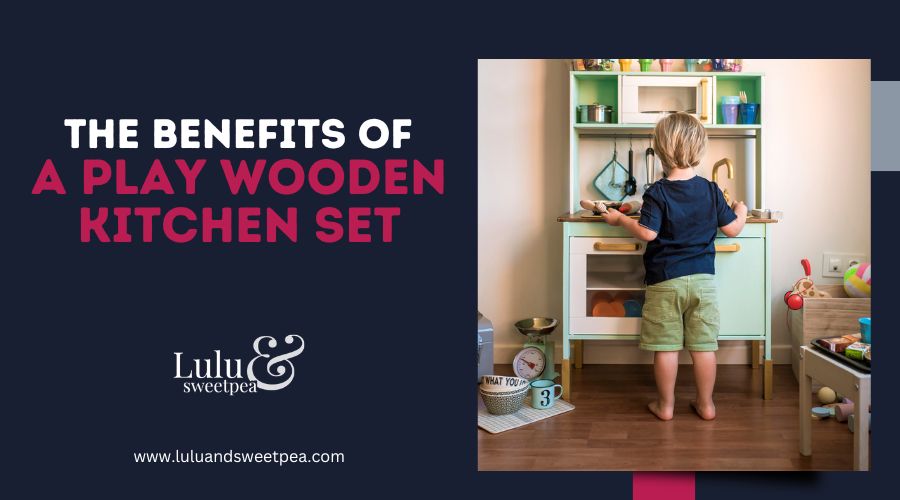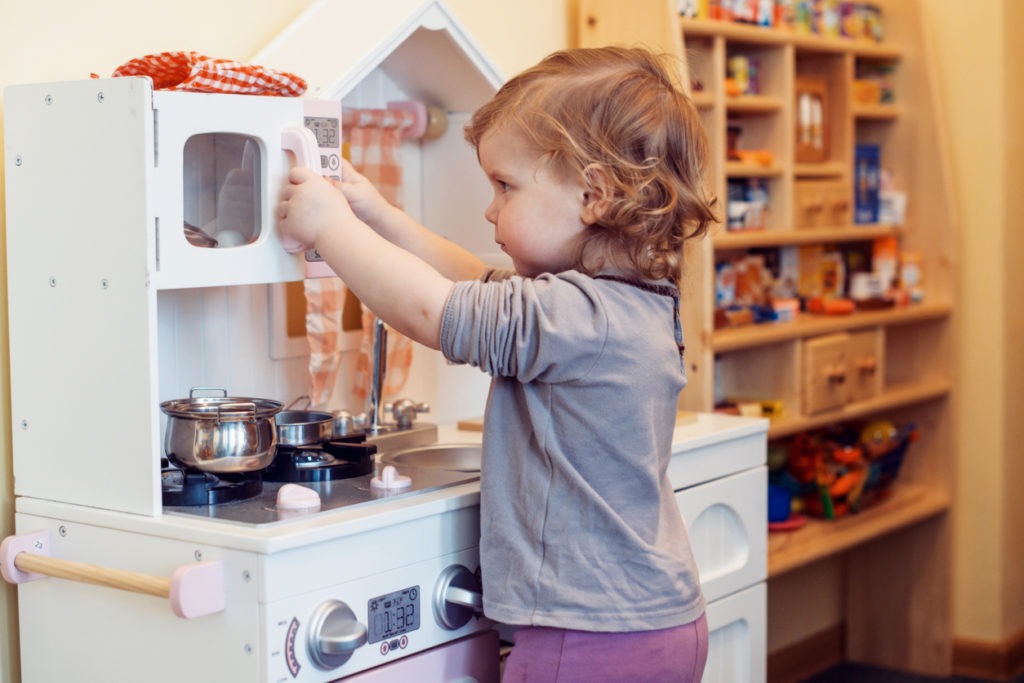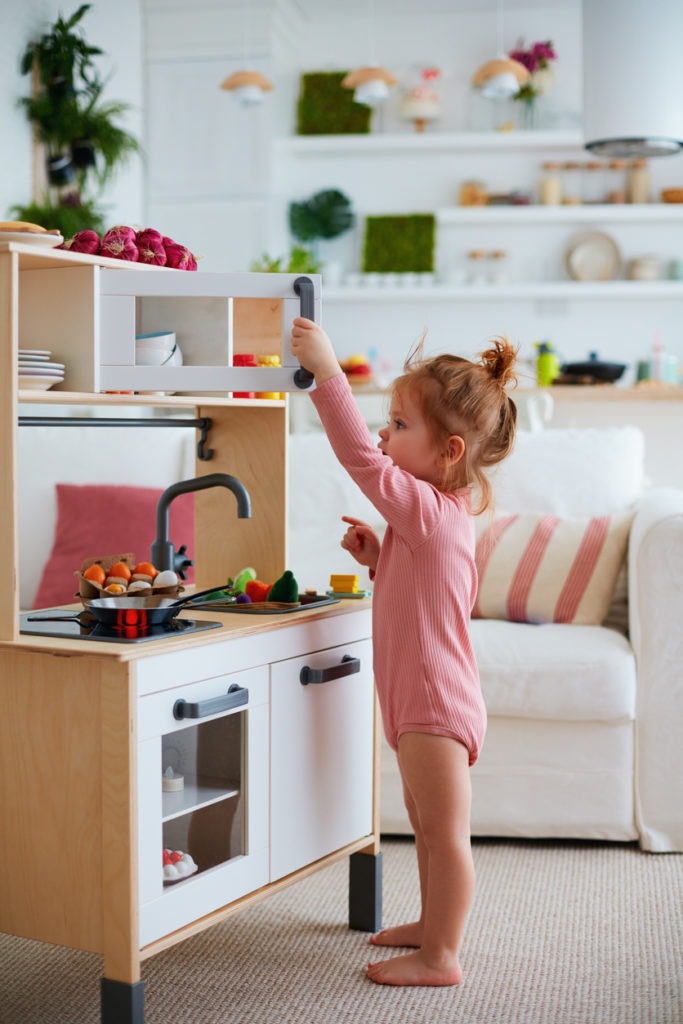As any child can attest, there is never a dull moment for play, and when that child has his or her very own play kitchen, the possibilities for imaginative fun are practically limitless. Young children may pretend to be grown-up chefs as they use an authentic-looking kitchen set to prepare elaborate dinners.
5 Good Things About a Play Kitchen
There are so many great ways to learn with play kitchens. Some of these activities help kids learn colors, while others help them learn math. Play kitchens are made so nicely now, and they come with things that help kids develop their motor skills.
Here are the top 5 reasons why a play kitchen is a good idea.
1. Enhances motor skills
Some play kitchens come with food-cutting tools. Grabbing food and tools is a great way for their fine motor skills to improve. The child has learned to control the amount of force he or she needs to use to chop each piece.
2. Demonstrates organizational skills
Your child will learn where to put things in their own kitchen, just like your mom did. They will learn where to put things and how to use all the different spaces for it. Assigning roles is another way to keep things in order. Whether you’re cooking with them or just sitting down to eat what they’ve made.
3. Promotes language development
With a play kitchen, you can teach your child words that he or she will use every day. You can teach her the names of fruits and vegetables and show her how to do simple things in the kitchen.
4. Encourages teamwork
There are so many parts in the play kitchen that your kids can work in pairs or more. Use this time to encourage people to work together to cook meals faster, decide what to cook, etc.
5. Imparts life skills
When you let kids play pretend, they can act out situations they know well. With a play kitchen, you can teach your kids how to cook and clean in simple ways. By letting them pretend to cook in the kitchen, pretend play will help them learn about the world.
Benefits of Wooden Toys
Wood, unlike plastic, is a natural material that is good for the environment. Even more so if the product is made from FSC wood, which has a label that says the forests will stay healthy. Also, here are some other good things about wooden toys:
- Appearance: Let’s be honest, wooden toys look a lot better than plastic ones. It can be used as a toy, but it also looks great as a piece of decor in a living room or bedroom.
- Robustness: Toys made of wood are usually stronger and last longer than toys made of other materials. So, they stay around longer! You can even pass them down from one generation to the next. What a nice thing!
- Design: When wooden toys are painted in their natural color or in neutral colors like white, gray, or black, they have a soft, warm look that is hard to find in plastic toys.
Suitable Age for Wooden toys
First, there are wooden toys for babies and toddlers, like rattles (for babies as young as 3 months) and blocks. Children as young as 6 months are often given toys that they can pull or push.
From the age of 3, you can find imitation toys made of wood, like a play kitchen or a dollhouse. This minimum age is needed because the wooden toy has small parts and other accessories. Children under 3 still put a lot of things in their mouths, so it’s important to pay attention to this.
There are also fake toys made of wood that kids as young as 2 can play with. Again, this will depend on how big the parts are.
Wooden Toys: Development and Motor Skills
Let’s talk about how wooden toys can help a child grow and learn.
1. Awakening Toys: From 3 to 6-8 months
As the name suggests, this toy is made to wake your baby up in the first few months. After 3 months, the baby starts to pay attention to more things, touch everything, and put everything in his or her mouth. It’s good for your child to get used to different materials so they can tell them apart.
2. Toys for babies aged 6 months to 2 years
From the age of one, a child learns more about what they can do with different things. Throw them on the floor, for example. So, choose toys made of solid wood. Your child’s fine motor skills will improve as he or she stacks wooden blocks or works on puzzles.
3. Pretend play: From 3 to 6 years old
At this age, the child starts making up stories and imitating his or her parents. You should get a kitchen, a dressing table, a dollhouse, or a parking garage.
Buyer’s Guide
Here are the things to look for when deciding which toy kitchens are the best to buy.
Educational value
Children learn by playing pretend and doing real things in the kitchen, like preparing food, cooking, cleaning up, doing laundry, and putting food and tools away. Some kitchens go even further and have clocks to help kids learn to tell time, recycling bins to encourage good habits, and chalkboards to write lists and recipes on. Look for ways your child can practice counting, adding, solving problems, being creative, learning new words, planning, and organizing.
Assembly
Kitchens, especially the bigger ones with a lot of cabinets and features, took a lot of time to put together and required the help of more than one adult. Think about your DIY skills. If you don’t have many, who can you ask to help? When it came to putting together some of the bigger kitchens, came to the rescue with a drill and screwdrivers. You could think about hiring a pro to save time, avoid making mistakes, and reduce stress.
Structure and design
Play kitchens come in many different styles, sizes, shapes, and colors. Think about where you’ll put the kitchen. Will it be in a child’s bedroom or playroom, or in a common area like the kitchen or dining room? Will you choose something that fits your style, or will you let the child’s love of brightly colored plastic guide you? Is it classic, or is it trendy in a way that could make it look old? If you need to pack it up to put it away after playing, choose a small one. Invest in one that will last if you want it to be passed down to other children or generations. We looked for strong, well-built kitchens that would last for a long time.
Surfaces that can be wiped clean and sinks that can be taken out make it much easier to clean up after a busy day in the kitchen. How many kids will be using the kitchen to play? If you have more than one child or host play dates, it’s worth spending money on a bigger kitchen with more work surfaces (island-style or attached breakfast bars help). Remember that you might need to tie it to a wall so it doesn’t fall on a child.
Accessories
Some kitchens come with accessories like pots, pans, and play food, but others don’t. Check before you buy. Real kitchen tools can be used in play kitchens, but what can be used will depend on how big the kitchen is. There are many stores that sell accessory kits for kitchens that look and feel the same. Mixing and matching can save you money and help you learn by exposing you to new materials and textures.
Functions and how they work together
Kitchens can have lights, hob rings that light up, knobs that click when you turn them, sounds of cooking or running water, and even water features that work. They aren’t necessary, but they make the kitchens more interesting, real, and fun. Simple designs can help kids use their imaginations more, and it’s cute to hear how kids make sounds like chopping, cooking, and pouring.
Age range
Think about how old the child or children will be when they use the kitchen. Kitchens can be different heights, so if your child is taller or older, make sure they won’t have to bend over to use the worktop or open the oven. If you want them to keep using the kitchen as they get older, choose something that can be changed and will last a long time.
Environmental impact
We’d all like to be better for the environment, so it’s a good idea to look at the materials used in the kitchen. Look for wood that is sustainable and FSA-approved.
Value for money
We thought that all of our best buys were a great value for the money, whether it was because of the materials used, how much fun they were, or how many things they could do. We liked the wooden kitchens better in terms of design, durability, and impact on the environment.
Conclusion
A kitchen set constructed of wood is ideal for kids because of its durability and safety. As a natural by-product of wood, it has far less health risks than its plastic counterpart, helping to maintain a clean, secure, and healthy environment for your child.


